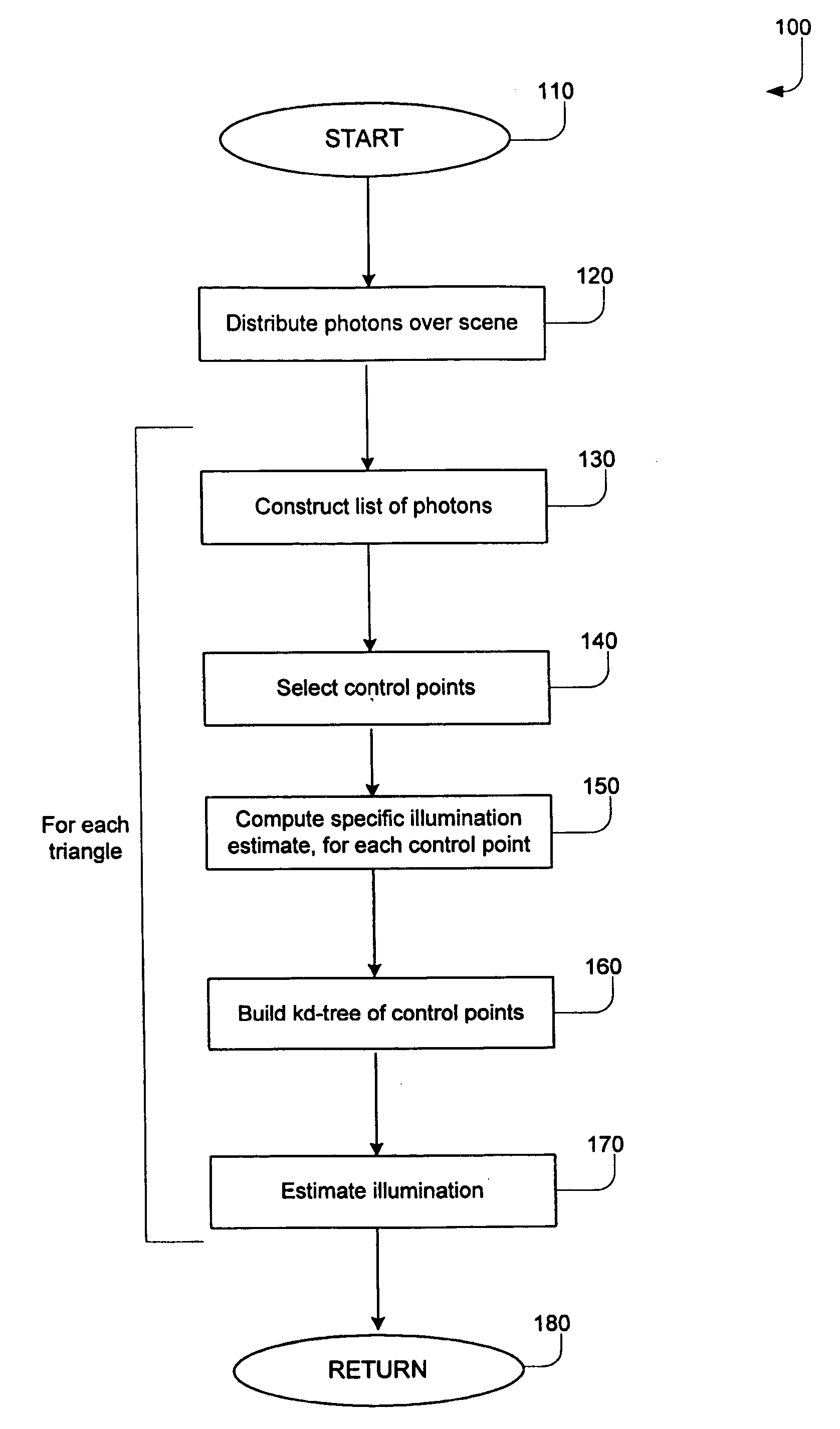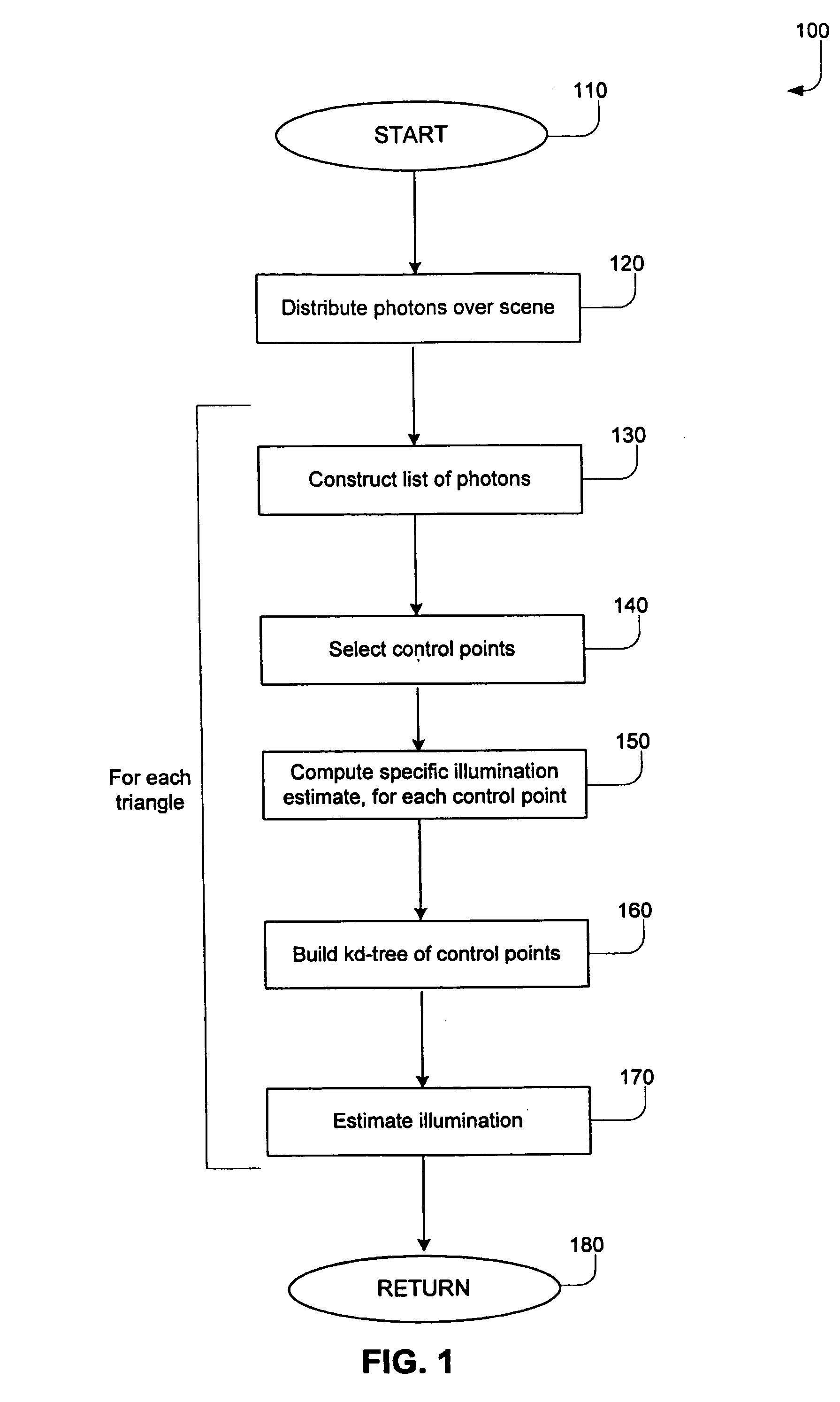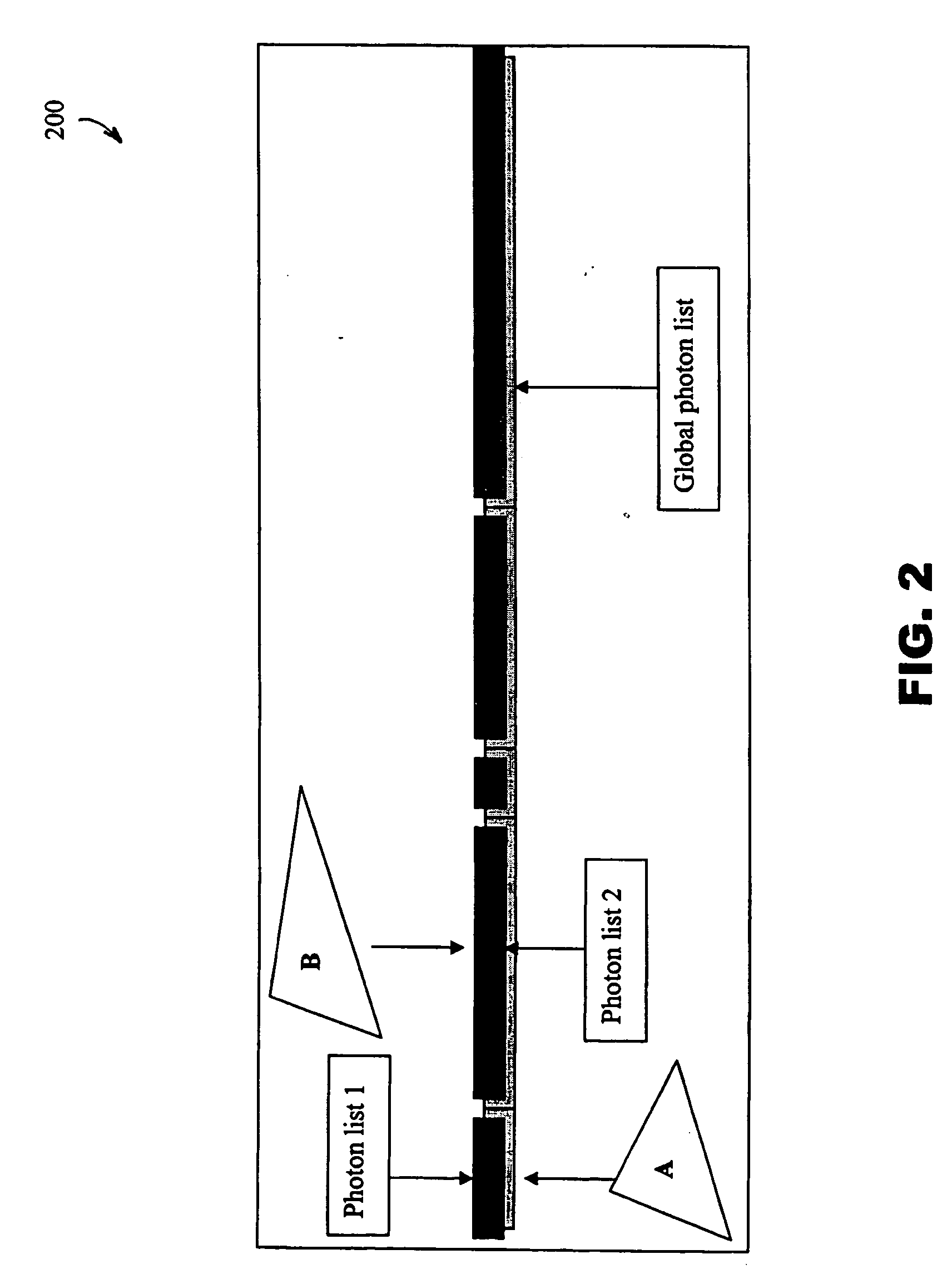Diffuse photon map decomposition for parallelization of global illumination algorithm
a global illumination and decomposition technology, applied in the field of computer graphics, can solve the problems of computational cost and difficulty in efficiently searching the kd-tree of a single large set of photons, and achieve the effect of reducing the cost of image processing and improving the efficiency of search
- Summary
- Abstract
- Description
- Claims
- Application Information
AI Technical Summary
Benefits of technology
Problems solved by technology
Method used
Image
Examples
Embodiment Construction
[0016]FIG. 1 illustrates the overall processing of an embodiment of the invention. The process may begin at block 110. In block 120, photons may be distributed over the scene to be rendered. Given that a scene may be rendered as a set of triangles, blocks 130 through 170 of FIG. 1 may be performed for each triangle or for each of a subset of the triangles. In block 130, a list of photons may be constructed for a triangle. In block 140, control points within the triangle may be selected. A control point is a reference point for a neighborhood or region of the triangle. The illumination at the control point will be estimated. This will allow the estimation of illumination at other points in the region. The selection and role of control points will be described further below. In block 150, the specific illumination estimate may be constructed for each of one or more control points in the triangle. In block 160, a kd-tree of the control points may be built. In block 170, illumination ma...
PUM
 Login to View More
Login to View More Abstract
Description
Claims
Application Information
 Login to View More
Login to View More - R&D
- Intellectual Property
- Life Sciences
- Materials
- Tech Scout
- Unparalleled Data Quality
- Higher Quality Content
- 60% Fewer Hallucinations
Browse by: Latest US Patents, China's latest patents, Technical Efficacy Thesaurus, Application Domain, Technology Topic, Popular Technical Reports.
© 2025 PatSnap. All rights reserved.Legal|Privacy policy|Modern Slavery Act Transparency Statement|Sitemap|About US| Contact US: help@patsnap.com



